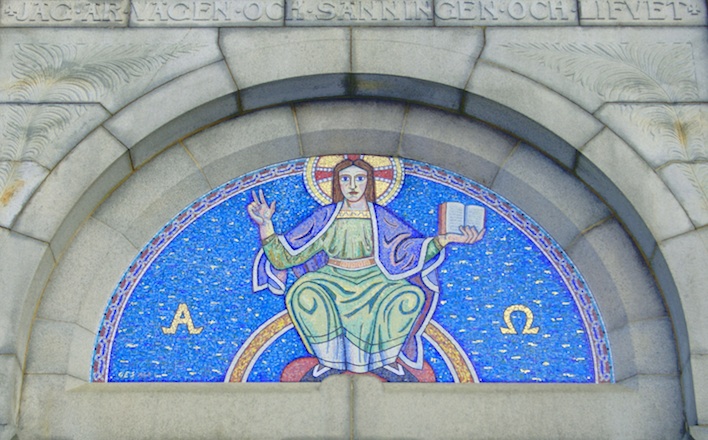Commentary on 1 Peter 2:2-10
In this Easter season, the letter of 1 Peter supplies useful metaphors for pondering the theological significance of Christ’s resurrection for faith-filled living.
The first verse in its opening thanksgiving prayer (1 Peter 1:3) sets the tone and basis of discussion throughout the rest of the letter: “Blessed be the God and Father of our Lord Jesus Christ! By his great mercy he has given us a new birth into a living hope through the resurrection of Jesus Christ from the dead.” Existence in Christ through resurrection is the foundational claim upon which prescriptions for Christian identity, behavior, and practice are made in the rest of the letter.
In 1 Peter 2:2-10, the writer piles one image on top of another, encouraging readers to imagine the boundless possibilities of Christian existence in light of Christ’s life. Some of those images include: movement from darkness to light (2:9), babies drinking milk (2:2), constructing God’s temple (2:4), believers as the outcome in God’s decision-making process of election (2:4, 6, 9; see also 1:1; 5:13), believers as God’s family (2:9-10, 7; see also 4:17), and the community as the site of God’s presence and household (2:5).
Metaphors abound in this passage! And no one metaphor captures everything there is to say about resurrection. Rather, they suggest different interpretative pathways forward to ponder and take up. One image worth considering in light of the rest is the metaphor of stones.
Stone imagery and Peter “The Rock”
The imagery of stones (lithos) dominates the nine verses of this lectionary passage, occurring five times from verses 4-8. Language of stones (lithos) should not be confused with another Greek word for stone or rock (petra). Indeed, petra-rock was the image assigned to Peter by Jesus in Matthew 16:18. Language for rock as petra occurs one time in 1 Peter (2:8). Here, the passage compares “a lithos-stone of stumbling” (lithos proskommatos) to “a petra-rock of offense” (petra skandalou).
This one instance in 1 Peter may signal the nicknaming of Peter as “The Rock” in Matthew 16:13-23. According to the Gospel story, Peter demonstrates both insight into Jesus’ identity as the Christ and Son of God (Matthew 16:16) and misunderstanding. When Peter rejects that a task of Christ is to suffer, die, and rise again, Jesus responds by calling his rejection an offense (translated as “a stumbling block” in the NRSV), deploying the Greek term skandalon (Matthew 16:21-23). Thus, petra-rock and skandalon-offense are key themes in Matthew’s story of Peter, which appear together as an intertextual echo in the letter of 1 Peter 2:8 (“a petra-rock of offense,” petra skandalou).
Stone imagery and the meaning of resurrection
Nevertheless, lithos-stone, not petra-rock, is the imagery of choice in 1 Peter 2. In verses 4-5, the letter maps aspects of the function and quality of “living stones” onto the identity of believers. “Living stones” is not a phrase explicitly found in the Septuagint (LXX/OT).1
The book of Nehemiah contains one of the closest references to “living stones” or “stones of life” in the LXX/OT. In the company of associates, one of Nehemiah’s opponents criticize attempts to rebuild the walls of Jerusalem saying, “What are these feeble Jews doing? Will they restore things? Will they sacrifice? Will they finish it in a day? Will they revive the stones out of the heaps of rubbish—and burned ones at that?” Tobiah the Ammonite was beside him, and he said, “That stone wall they are building—any fox going up on it would break it down!” (Nehemiah 4:2-3).
In Nehemiah, a major focus is dispersion and return—themes that are also important in 1 Peter. Within this passage, imagery about stones is configured as demolition materials salvaged and repurposed for rebuilding the Holy City and site of God’s presence.
From this perspective, the “living stone” imagery may invite us to consider resurrection as a site of repurposed life and reconstruction. Resurrection life creates the environment to house and honor the presence of God within and beyond Christian communities. Indeed, the image of being built into a “spiritual house” or “house of God’s Spirit” (oikos pneumatikos) is referenced in 1 Peter 2:5 alongside lithos-stone imagery.
Reinterpreting stones: Jewish tradition and Christian proclamation
Verses 6-8 quote and interpret three passages from the LXX/OT that use the word lithos-stone:
- 1 Peter 2:6 reinterprets Isaiah 28:16—This passage describes Jesus as a figure of both shame and honor. He is shamefully rejected by humans but honored by God as a chosen, valuable, and founding building block in God’s new creation (1 Peter 1:3, 7).
- 1 Peter 2:7 reinterprets Psalm 118:22—This quotation is identical to the version in the LXX Psalm 117:22. This scriptural citation is deployed in reference to Jesus in the Gospel tradition (Mark 12:10-11; Matthew 21:42; Luke 20:17; see also Acts 4:11) and Pauline tradition (Ephesians 2:20). In all cases, the OT scripture is cited to predict resurrection. Consequently, 1 Peter seems to recycle a Christian interpretation of the Jewish Scriptures already circulating among early believers.
- 1 Peter 2:8 reinterprets Isaiah 8:13-14—The first part of this LXX/OT passage appears in 1 Peter 3:15 in the language of “but in your hearts sanctify Christ as Lord.” The second part is altered slightly in 1 Peter. The letter retains the language of “lithos-stone of stumbling” while exchanging the language of “falling rock” for “petra-rock of offense.”
Holding these three passages together is the language of honor-shame. Reinterpreting stone imagery within Jewish tradition, through the Christian proclamation of resurrection, invites readers to consider how they participate, like Jesus, in the honor-shame cycle. Jesus was rejected by some of his family, friends, and community while honored in resurrection by God. This passage portrays the difficulties that can accompany changes in communal identity, practice, and behavior—especially when it defies social conventions and family traditions.
Yet, it also celebrates the honor of being a family member of God. The passage concludes by deploying other metaphors to build believers’ appreciation for their new corporate identity and kinship. Believers who live inspirited by resurrection are invited to think of themselves and their communities as precious and valuable possessions, as royal dignitaries with spiritual inheritance (see also 1 Peter 1:3-4), as new people with a repurposed existence, and as priestly functionaries making sacrifice and worship to God (2:9-10).
The interpretative challenge for Easter proclamation
Today’s Easter reading invites us to reconsider our narrow constructions of resurrection. We are encouraged to entertain the possibility that resurrection life is so profound, aspects of it are captured in the images of the mundane—from rocks, milk, darkness, light, and growth—as well as in the images of the magnificent—from iconic edifices, precious stones, and newborn babies. We only need have the courage and imagination to play with interpretations, exploring the vast possibilities of resurrection in this season. I hope we follow 1 Peter’s model.
Notes:
By LXX, I mean the Septuagint, which is the Greek translation of the Hebrew Scriptures. By OT, I mean the Old Testament, which is the Hebrew Scripture interpreted with reference to the New Testament.


May 10, 2020